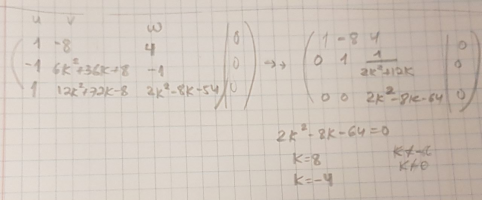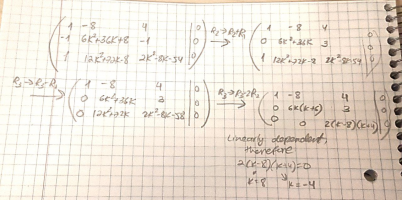TheWrathOfMath
Junior Member
- Joined
- Mar 31, 2022
- Messages
- 162
Given: u,v,w are linearly independent vectors.
Find all values of k for which the following set is linearly dependent:

Is my solution correct?
I basically put all vectors in a matrix, changed it into (reduced) row echelon form using elementary row operations (I know that simply row echelon form is enough, but I decided to continue) and set the appropriate entry equal to zero so that R3 will be equal to zero.
I obtained only two values and I am not certain about whether I solved the problem properly.

Find all values of k for which the following set is linearly dependent:
Is my solution correct?
I basically put all vectors in a matrix, changed it into (reduced) row echelon form using elementary row operations (I know that simply row echelon form is enough, but I decided to continue) and set the appropriate entry equal to zero so that R3 will be equal to zero.
I obtained only two values and I am not certain about whether I solved the problem properly.



